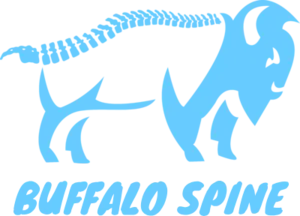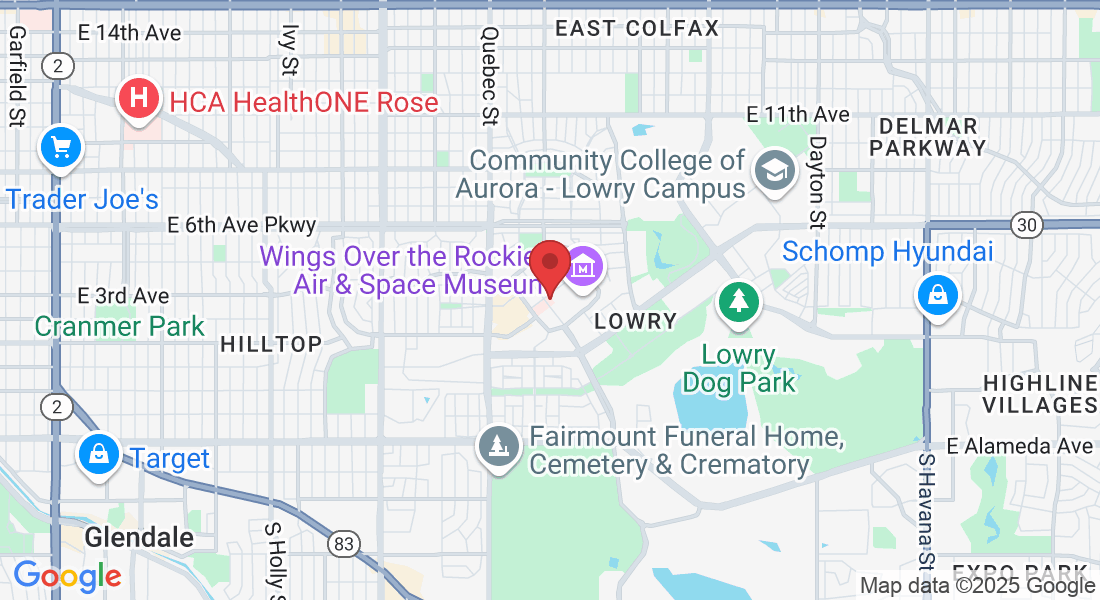Functional Dry Needling in Denver, CO
Advanced Muscle Relief & Performance Recovery
If you experience chronic muscle tightness, sharp trigger points, or restricted movement that hasn't improved with stretching or massage, Functional Dry Needling (FDN) could be the next-level solution your body needs.
At Buffalo Spine Sport Chiropractic in Denver, CO, we offer precision-guided dry needling to help athletes, active adults, and rehab-driven individuals eliminate deep-seated muscle tension and regain full function — without medication or invasive procedures.
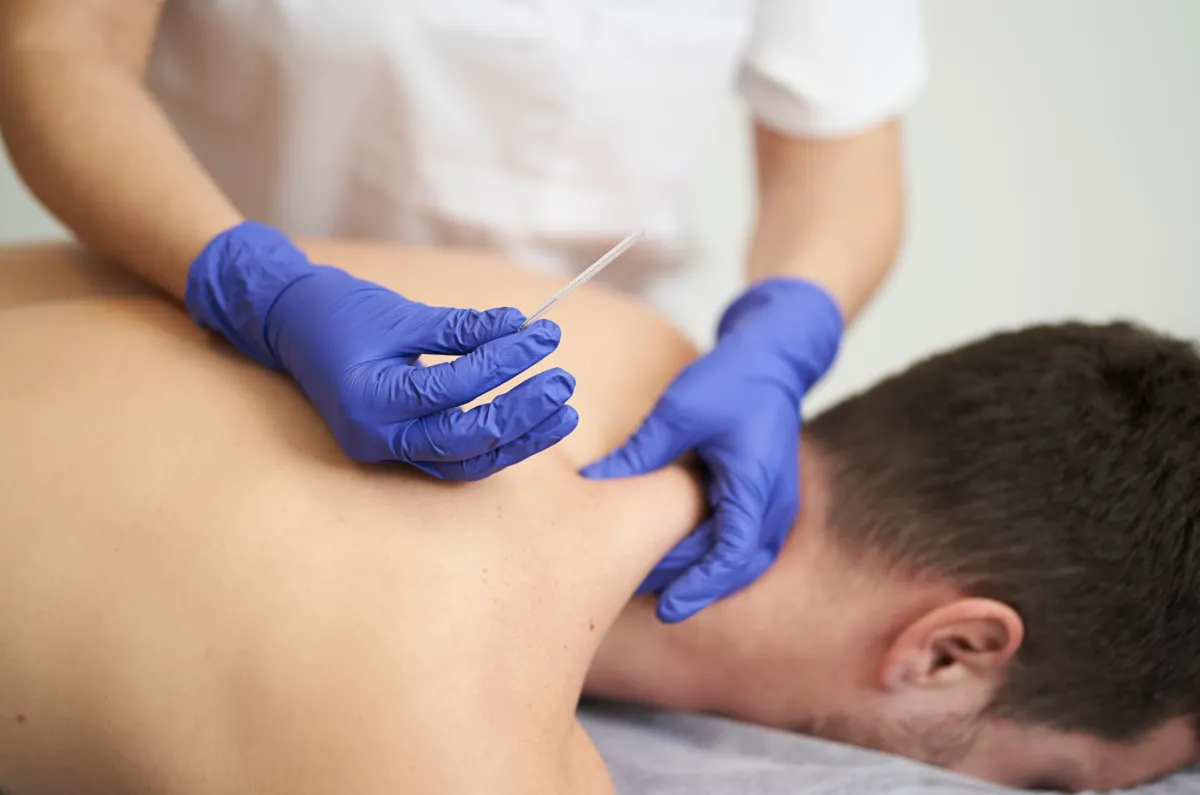
What Is Functional Dry Needling?
Functional Dry Needling is a skilled, evidence-based technique that uses ultra-fine, sterile acupuncture-style needles to target and release myofascial trigger points deep within muscles.
Unlike acupuncture, which is based on Eastern meridian theory, dry needling is grounded in modern anatomy and neuroscience. The goal is to restore normal muscle tone, improve blood flow, and disrupt chronic pain cycles.
What Can Dry Needling Help Treat?
Dry needling is especially effective for:
Tight, knotted muscles that don’t respond to massage
Chronic overuse injuries from sports or repetitive motion
Postural dysfunction or compensatory pain
Persistent tension headaches or TMJ
Referred pain from trigger points
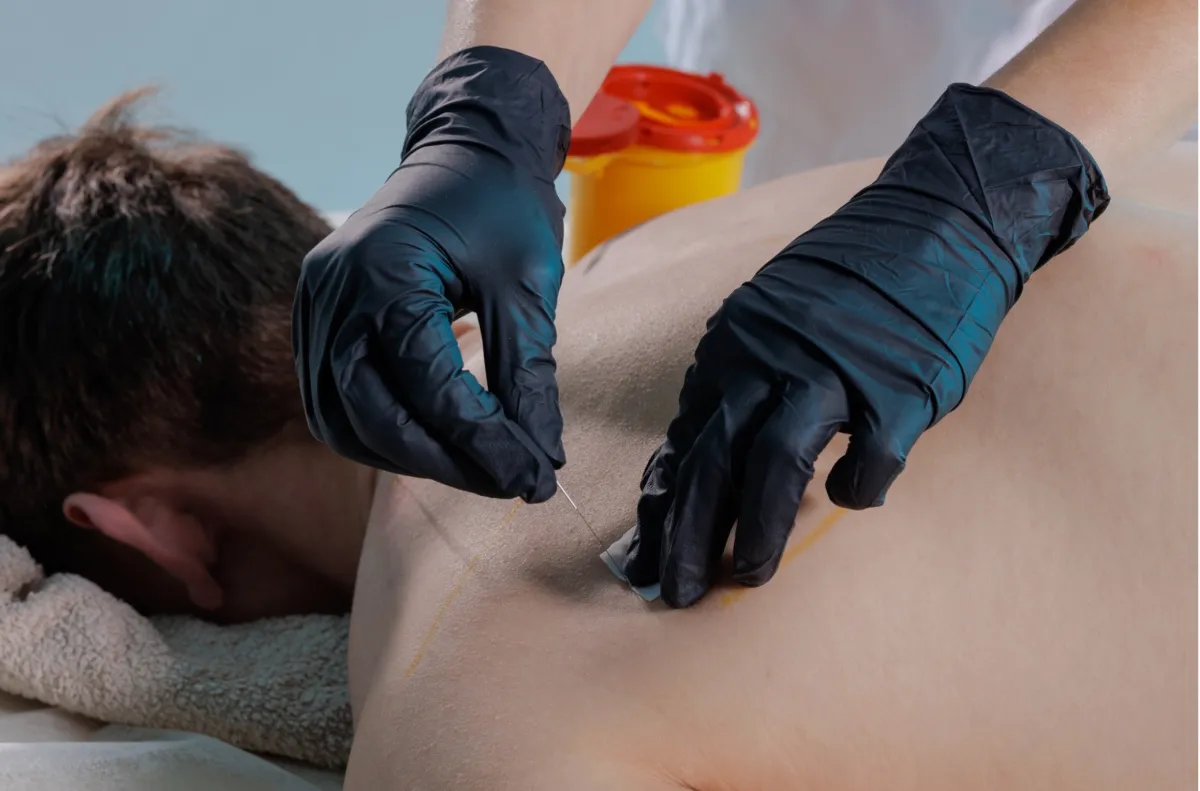
Conditions Treated with Shockwave Therapy
Common Conditions We Treat with Dry Needling:
Neck and shoulder pain
Lower back and gluteal tightness
Knee pain (quad or IT band-related)
Hamstring and calf tightness
Plantar fasciitis and foot cramping
Tennis elbow and forearm strain
How It Works
The doctor inserts a monofilament needle into a trigger point — a hyper-irritable knot in the muscle. This causes a local twitch response (LTR), which is a rapid contraction and relaxation of the muscle.
The result?
Muscle tension release
Increased oxygen and blood flow
Deactivation of pain pathways in the nervous system
Combined with mobility work and movement retraining, this technique can result in fast relief and long-term change.
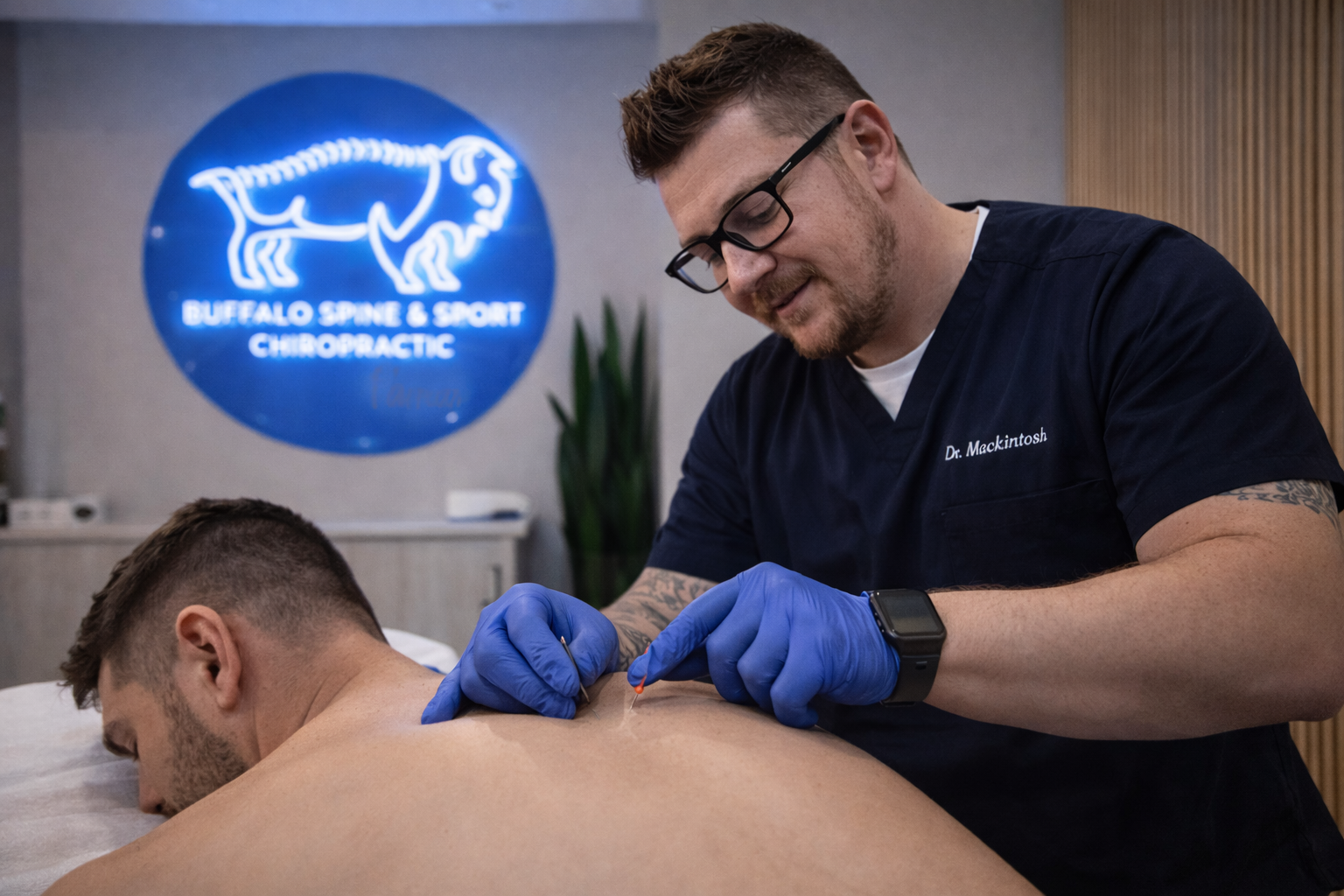
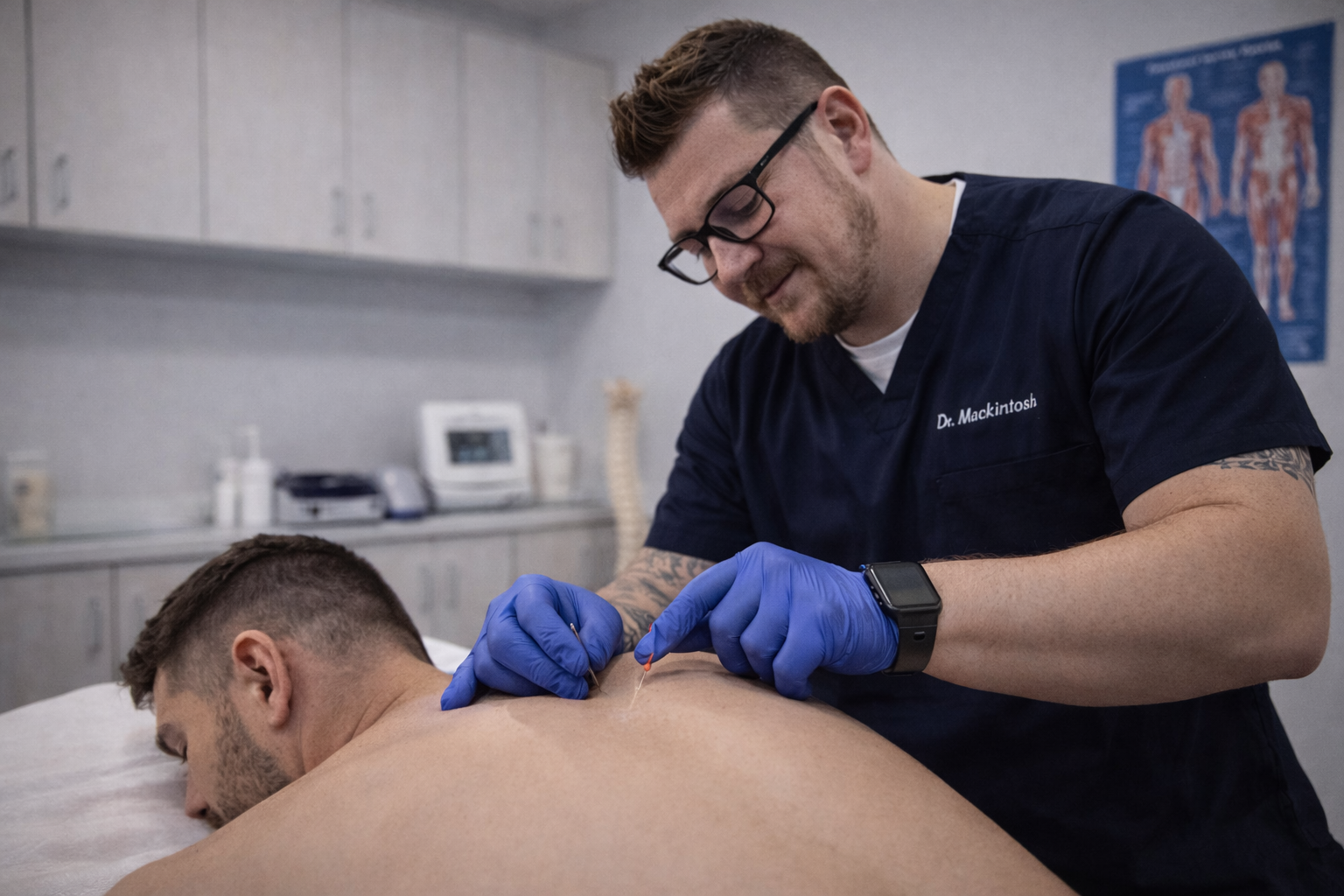
Efficient and Effective
Sessions are brief (10–20 minutes) and highly focused. You can resume normal activity the same day.
Why Choose Buffalo Spine for Dry Needling in Denver?
Our staff is trained and certified in evidence-based dry needling protocols. We use our clinical assessment to determine exact muscle imbalances and trigger points before treatment.
Integrated into Full Movement Care
Dry needling is not a standalone solution — at Buffalo Spine Sports Chiropractic, it is combined with:
Active movement assessments
Manual therapy
Corrective exercise strategies
This integrated approach ensures lasting relief that goes beyond temporary symptom reduction.
No rushed sessions or bouncing between techs. Every treatment is delivered personally by Dr. Mac.
What to Expect During a Session
Step 1
Assessment
The doctor will perform a movement and palpation exam to locate dysfunctional tissue patterns and trigger points.
Step 2
Dry Needling Treatment
Fine needles are inserted into the affected muscles, often resulting in an involuntary twitch. This resets neuromuscular tone.
Step 3
Recovery & Reinforcement
You may feel mild soreness (like a deep workout) for 24 hours, but relief often starts right away. Mobility drills or light activity may be recommended to enhance effects.
Our Service areas
Areas We Service
Aurora
Denver
Glendale
Lakewood
Commerce City
Englewood
Cherry Hills Village
Greenwood Village
And Surrounding areas
Frequently Asked Questions
Does dry needling hurt?
Most patients describe it as a brief pinch or twitch. It’s generally well tolerated and followed by relief.
How many sessions do I need?
This depends on your condition. Acute cases may respond in 1–3 sessions. Chronic issues may take 4–8.
Is dry needling the same as acupuncture?
No. While both use similar needles, dry needling targets muscle dysfunction from a Western anatomical perspective.
Is it safe?
Yes. Dr. Mac is certified and uses single-use sterile needles. Contraindications are reviewed in advance.
Can I combine this with chiropractic or rehab?
Absolutely. It’s most effective when integrated with movement correction and rehab strategies.
Book Your Dry Needling Session with Buffalo Spine
Whether you're dealing with nagging tension or recovering from a training cycle, dry needling can give your muscles the reset they need.
Release stuck muscles
Improve mobility
Break pain cycles
Call or schedule online to experience modern, functional muscle recovery — right here in Denver, CO.
Get In Touch
Email: [email protected]
Address
130 rampart Way,
Suite 110
Denver, CO 80230
Business Hours
Monday – Thursday
9:00 AM – 12:00 PM
(Lunch 12 PM - 1 PM)
1:00 PM - 5:30 PM
Friday
9:00 AM - 3:30 PM
Saturday and Sunday
CLOSED
Phone Number:
(720)-916-8625
Fax:
(720)-222-5990
Copyrights 2025| Buffalo Spine & Sport Chiropractic™ | Terms & Conditions
